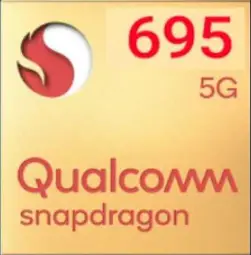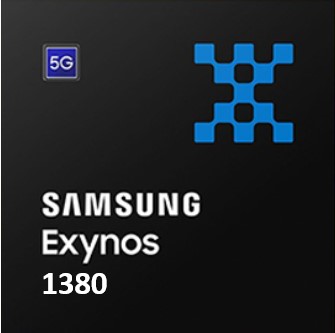Qualcomm Snapdragon 695 vs Samsung Exynos 1380
We’ve prepared an in-depth comparison between the newly launched Snapdragon 695 and Exynos 1380 SoCs, developed by Qualcomm and Samsung respectively. We’ve evaluated the pros and cons of these 8-core processors based on Geekbench, Antutu, and 3DMark benchmark scores alongside their technical specifications.
Review
CPU Performance
Evaluation of Single-Core and
Multi-Core Processor Performance
Gaming Performance
Gaming and OpenCL/Vulkan
Performance of the Graphics Processing Unit (GPU)
Battery life
Energy Efficiency in Battery Usage
Tech Insist Score
Overall Performance Rating of the
Chip
Key Differences
Pros of Exynos 1380
- Exynos 1380 has 9.09 % higher CPU clock speed than Snapdragon 695 ( 2400 vs 2200 MHz).
- Exynos 1380 has 13.10 % higher GPU clock speed than Snapdragon 695 ( 950 vs 840 MHz).
- Exynos 1380 has 50.02 % higher memory frequency than Snapdragon 695 ( 3200 vs 2133 MHz).
- Exynos 1380 has 16.67 % smaller sized transistor than Snapdragon 695 ( 5 vs 6 nm).
- Exynos 1380 has 40.79 % better AnTuTu 9 score than Snapdragon 695 ( 523 K vs 371 K).
Benchmarks
Evaluating performance through competitive testing in leading benchmarks.AnTuTu 10
| CPU | 115765 | 151675 |
| GPU | 93638 | 135413 |
| Memory | 60715 | 110932 |
| UX | 101282 | 124860 |
| Total score | 371400 | 522880 |
GeekBench 6
Single-Core Score
Multi-Core Score
3DMark
3DMark Wild Life Performance
| Stability | 99% | - |
| Graphics test | 7 FPS | - |
| Score | 1204 | - |
Specifications
Full list of technical specifications of Snapdragon 695 and Dimensity 9300CPU
| Architecture | 2x 2.2 GHz – Kryo 660 Gold (Cortex-A77) 6x 1.7 GHz – Kryo 660 Silver (Cortex-A55) |
4x 2.4 GHz – Cortex-A78 4x 2 GHz – Cortex-A55 |
| Cores | 8 | 8 |
| Base Frequency | 1700MHz | 2000MHz |
| Turbo Frequency | 2200MHz | 2400MHz |
| Instruction set | ARMv8.2-A | ARMv8.2-A |
| L2 cache | - | - |
| L2 cache | - | - |
| L3 cache | - | - |
| Process | 6 nanometers | 5 nanometers |
| Transistor count | - | - |
| TDP (Sustained Power Limit) | 6 W | - |
Graphics
| GPU name | Adreno 619 | Mali-G68 MP5 |
| Architecture | Adreno 600 | Valhall 2 |
| GPU frequency | 840 MHz | 950 MHz |
| Pipelines | - | 5 |
| Shading units | 128 | - |
| Total shaders | 256 | - |
| FLOPS | 536 Gigaflops | 608 Gigaflops |
| Vulkan version | 1.1 | 1.1 |
| OpenCL version | 2.0 | 2.0 |
| DirectX version | 12 | 12 |
AI Accelerator
| Neural processor (NPU) | Hexagon 686 | Yes |
Memory
| Memory type | LPDDR4X | LPDDR5 |
| Memory frequency | 2133 MHz | 3200 MHz |
| Bus | - | - |
| Max bandwidth | 17 Gbit/s | - |
| Max size | 8 GB | 8 GB |
Multimedia (ISP)
| Storage type | eMMC 5.1, UFS 2.2 | UFS 3.1 |
| Max display resolution | 2520 x 1080 | 2960 x 1440 |
| Max camera resolution | 1x 108MP, 2x 16MP | 1x 200MP |
| Video capture | 1K at 60FPS | 4K at 30FPS |
| Video playback | 1080p at 60FPS | 4K at 30FPS |
| Video codecs | H.264, H.265, VP8, VP9 | H.264, H.265, VP8 |
| Audio codecs | AAC, AIFF, CAF, MP3, MP4, WAV | AAC, AIFF, CAF, MP3, MP4, WAV |
Connectivity
| Modem | Snapdragon X51 | - |
| 4G support | LTE Cat. 18 | LTE Cat. 18 |
| 5G support | Yes | Yes |
| Download speed 5G | Up to 2500 Mbps | Up to 3670 Mbps |
| Download speed 4G | Up to 800 Mbps | - |
| Upload speed 5G | Up to 1500 Mbps | Up to 1280 Mbps |
| Upload speed 4G | Up to 210 Mbps | - |
| Wi-Fi | 6 | 6 |
| Bluetooth | 5.2 | 5.2 |
| Navigation | GPS, GLONASS, Beidou, Galileo, QZSS, SBAS, NAVIC | GPS, GLONASS, Beidou, Galileo |
Info
| Announced | October 2021 | February 2023 |
| Class | Mid-range | Mid range |
| Model number | SM6375 | S5E8835 |
| Official page | Snapdragon 695 official site | Exynos 1380 official site |

